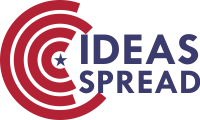Evolution of Approaches and Methods in Teaching Foreign Languages
Abstract
Foreign language teaching is a complex process, in addition to involving the main subjects of teaching -students and teachers- as well as the teaching and learning activities generated between them, it also includes an extremely complex element: language. Since it encompasses aspects of complexity, human knowledge about it necessarily depends on the level and general methods of understanding the world. The question of the nature of language is essential for foreign language teaching, as it directly influences the principles, objectives, and design of teaching. Language teaching methods have evolved, from traditional approaches to communicative methods. In this study, we briefly present some of the main methods and approaches to language teaching so that we can understand better their nature and to adopt a panoramic and scientific perspective on our teaching.
Downloads
References
[2] Anthony, E. M. (1963). Approach, method, and technique. English Language Teaching, 17(2), 63–67. https://doi.org/10.1093/elt/xvii.2.63
[3] Barreto, A. B. P. C. M. (2012). Metodología para la enseñanza y aprendizaje del español como lengua extranjera.
[4] Martín Sánchez, M. A. (2009). Historia de la metodología de enseñanza de lenguas extranjeras.
[5] Sánchez Pérez, A. (2009). La enseñanza de idiomas en los últimos cien años: Métodos y enfoques.
[6] Barros Bastida, C., & Barros Morales, R. (2015). Los medios audiovisuales y su influencia en la educación desde alternativas de análisis. Revista Universidad y Sociedad, 7(3), 26–31.
[7] Pérez-Ortega, I. (2017). Creación de recursos educativos digitales: Reflexiones sobre innovación educativa con TIC. Revista Internacional de Sociología de la Educación, 6(2), 243–268. https://doi.org/10.15366/rise2017.6.2.008
[8] Krashen, S. (1982). Principles and practice in second language acquisition. Pergamon Press.
[9] Wilkins, D. A. (1972). Linguistics in language teaching (Vol. 111). Edward Arnold.
[10] Estaire, S., & Zanón, J. (1990). El diseño de unidades didácticas en L2 mediante tareas: Principios y desarrollo. Culture and Education, 2(7–8), 55–89.
[11] Harmer, J. (2007). The practice of English language teaching (4th ed.). Longman.
[12] Prabhu, N. S. (1987). Second language pedagogy (Vol. 20). Oxford University Press.
[13] Breen, M., & Candlin, C. N. (1987). Which materials? A consumer’s and designer’s guide. In L. E. Sheldon (Ed.), ELT textbooks and materials: Problems in evaluation and development (ELT Documents 126, pp. 13–28). Modern English Publications.
[14] Clarke, M. A. (1994). The dysfunctions of the theory/practice discourse. TESOL Quarterly, 28(1), 9–26. https://doi.org/10.2307/3587196
[15] Kumaravadivelu, B. (2001). Toward a postmethod pedagogy. TESOL Quarterly, 35(4), 537–560. https://doi.org/10.2307/3588427
[16] Kumaravadivelu, B. (2003). Beyond methods: Macrostrategies for language teaching. Yale University Press.

This work is licensed under a Creative Commons Attribution 4.0 International License.
Copyright for this article is retained by the author(s), with first publication rights granted to the journal.
This is an open-access article distributed under the terms and conditions of the Creative Commons Attribution license (http://creativecommons.org/licenses/by/4.0/).









1.png)









1.png)











